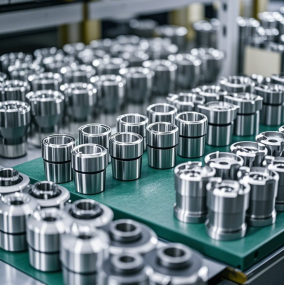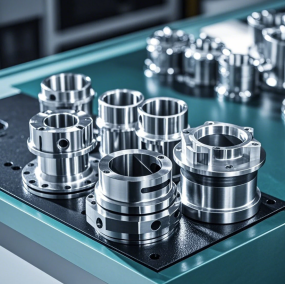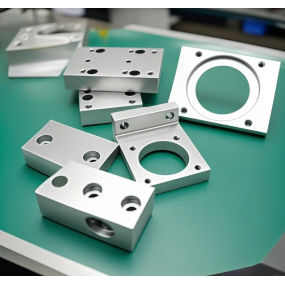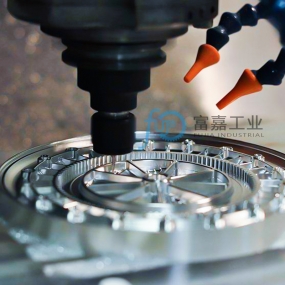As a commonly encountered material in the precision machining industry, steel is used in many mechanical fields for component processing. However, steel precision machining manufacturers must distinguish between various commonly used steel grades and corresponding application products. EMAR Precision Technology has been dedicated to steel precision machining for 18 years and has compiled a large amount of information in the form of tables to share with you our common and frequently used steel grades and applications. Let's take a look together.
1. Common grades and applications of carbon structural steel
Grade Qb/Mpa and old standard usage Q195//315-390A1 are used for manufacturing parts with smaller load-bearing capacity, iron wires, iron rings, shims, split pins, pull rods, stamped parts, and welded parts. Q215A335-410A2 is used for manufacturing pull rods, rings, washers, carburizing rings, carburizing parts, and welded parts. BC2Q235A375-460A3A and B grades are used for manufacturing metal structural components, carburizing or carbonitriding parts with low core strength requirements, tie rods, connecting rods, hooks, couplers, bolts, nuts, sleeves, shafts, and fittings; C. D-grade is used for manufacturing important welded structural components. BB3C//D//Q255A410-510A4 is used for manufacturing parts with low strength requirements such as shafts, spindles, hooks, pull rods, rocker arms, wedges, etc. This negative weldability is acceptable. BC4Q275//490-610C5 is used for manufacturing parts with high strength requirements such as shafts, sprockets, gears, and hooks.
2. The corresponding grades and uses of commonly used high-quality carbon steel
Steel group grade, heat treatment type, hardness (), application, ordinary manganese content steel, 15 normalizing, 148 plasticity and toughness; Both welding performance and cold pressing performance are excellent, but the strength is low. It is used to manufacture parts, fasteners, stamped parts with low stress and high toughness requirements, as well as low load parts that do not require heat treatment, such as bolts, screws, braces, flanges, etc. Normalizing and tempering 99-143 ordinary manganese content steel 20 normalizing 156 is used to manufacture mechanical parts that do not withstand high stress but require high toughness, such as levers, shaft sleeves, screws, lifting hooks, etc. It can also be used to manufacture carburized parts with high surface hardness and certain strength and toughness in the main part. Normalization tempering 103-15645 Normalization 197-241 is used to manufacture parts that require high strength and moderate toughness. It is usually used in quenched and tempered, normalized states, with a quenching hardness of generally 40-50 HRC, such as gears, racks, sprockets, shafts, keys, pins, compressor and pump parts, and shaft rollers. It can replace carburizing steel in manufacturing gears, shafts, piston pins, etc., but it needs to be quenched with ultra-high frequency or flame surface quenching. Normalization tempering 156-217217-25560229-255 has a relatively high strength and elasticity, but there is a tendency to crack during quenching. Only small parts can be quenched, and normalization is commonly used for large parts. Used for manufacturing shafts, springs, washers, clutches, camshafts, etc. Low plasticity during cold deformation. 20Mn normalized 197 steel with high manganese content is a high-strength low-carbon carburizing steel that can be used to manufacture camshafts, gears, couplings, hinges, drag rods, etc. The welding performance of this steel is still acceptable. 60Mn normalized 229-269 steel has high strength and hardenability. It is a carbon spring steel with a low tendency for decarburization, but it is sensitive to overheating and prone to quenching cracks. It also has tempering hardenability and is suitable for manufacturing spiral springs, leaf springs, various flat round springs, spring rings, spring plates, cold drawn or wound springs. Here, we need to note that the numbers appearing in the grade indicate a carbon mass fraction of a few tens of thousands, such as 15 tens of thousands and 20 tens of thousands. 45 steel represents an average carbon mass of 0.5%, 60Mn steel represents an uneven carbon mass of 0.6%, and manganese mass fraction is 0.7%~1%.


 Spanish
Spanish Arabic
Arabic French
French Portuguese
Portuguese Belarusian
Belarusian Japanese
Japanese Russian
Russian Malay
Malay Icelandic
Icelandic Bulgarian
Bulgarian Azerbaijani
Azerbaijani Estonian
Estonian Irish
Irish Polish
Polish Persian
Persian Boolean
Boolean Danish
Danish German
German Filipino
Filipino Finnish
Finnish Korean
Korean Dutch
Dutch Galician
Galician Catalan
Catalan Czech
Czech Croatian
Croatian Latin
Latin Latvian
Latvian Romanian
Romanian Maltese
Maltese Macedonian
Macedonian Norwegian
Norwegian Swedish
Swedish Serbian
Serbian Slovak
Slovak Slovenian
Slovenian Swahili
Swahili Thai
Thai Turkish
Turkish Welsh
Welsh Urdu
Urdu Ukrainian
Ukrainian Greek
Greek Hungarian
Hungarian Italian
Italian Yiddish
Yiddish Indonesian
Indonesian Vietnamese
Vietnamese Haitian Creole
Haitian Creole Spanish Basque
Spanish Basque









